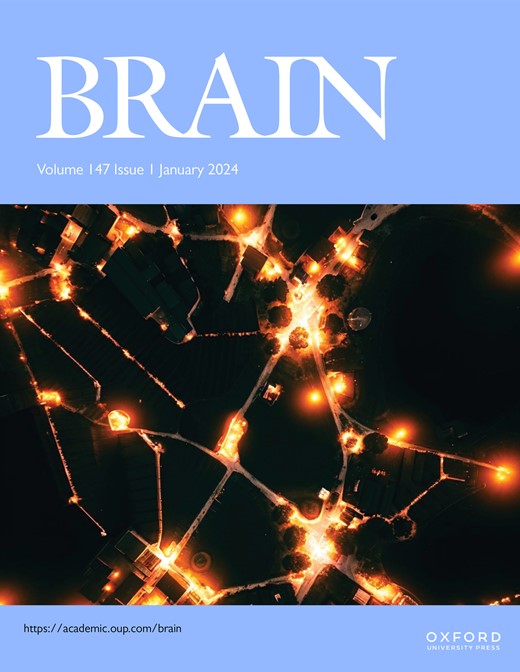Pathway-dependent brain stimulation responses indicate motion processing integrity after stroke
IF 10.6
1区 医学
Q1 CLINICAL NEUROLOGY
引用次数: 0
Abstract
Homonymous Hemianopia (HH), a common visual impairment resulting from occipital lobe lesions, affects a significant number of stroke survivors. Intensive perceptual training can foster recovery, possibly by enhancing surviving visual pathways. This study employed cortico-cortical paired associative stimulation (ccPAS) to induce associative plasticity within the residual and bi-directional primary visual cortex (V1) - middle temporal area (MT) pathways in stroke patients. We used ccPAS, which is thought to tap into Hebbian-like spike-timing dependent plasticity, over a motion processing pathway in stroke patients to transiently improve visual motion discrimination in their blind field. Sixteen stroke patients participated in this double-blind, crossover study comparing the effects of bidirectional ccPAS (V1-to-MT or MT-to-V1) on motion discrimination and EEG-Granger Causality. Additionally, we explored potential multimodal sources of inter-individual variability. Results showed that MT-to-V1 ccPAS enhanced motion direction discrimination, but the expected electrophysiological increase in top-down MT-to-V1 inputs was observed only in patients who showed improvement in motion discrimination. Good responders to MT-V1 ccPAS also demonstrated improved functional coupling between the cortical motion pathway and other relevant areas in the visual network, as well as more preserved ipsilesional V1-MT structural integrity. These findings indicate that targeted ccPAS can effectively engage functionally relevant residual visual pathways in stroke-affected brains, potentially offering new avenues for patient stratification and visual recovery strategies.求助全文
约1分钟内获得全文
求助全文
来源期刊

Brain
医学-临床神经学
CiteScore
20.30
自引率
4.10%
发文量
458
审稿时长
3-6 weeks
期刊介绍:
Brain, a journal focused on clinical neurology and translational neuroscience, has been publishing landmark papers since 1878. The journal aims to expand its scope by including studies that shed light on disease mechanisms and conducting innovative clinical trials for brain disorders. With a wide range of topics covered, the Editorial Board represents the international readership and diverse coverage of the journal. Accepted articles are promptly posted online, typically within a few weeks of acceptance. As of 2022, Brain holds an impressive impact factor of 14.5, according to the Journal Citation Reports.
 求助内容:
求助内容: 应助结果提醒方式:
应助结果提醒方式:


